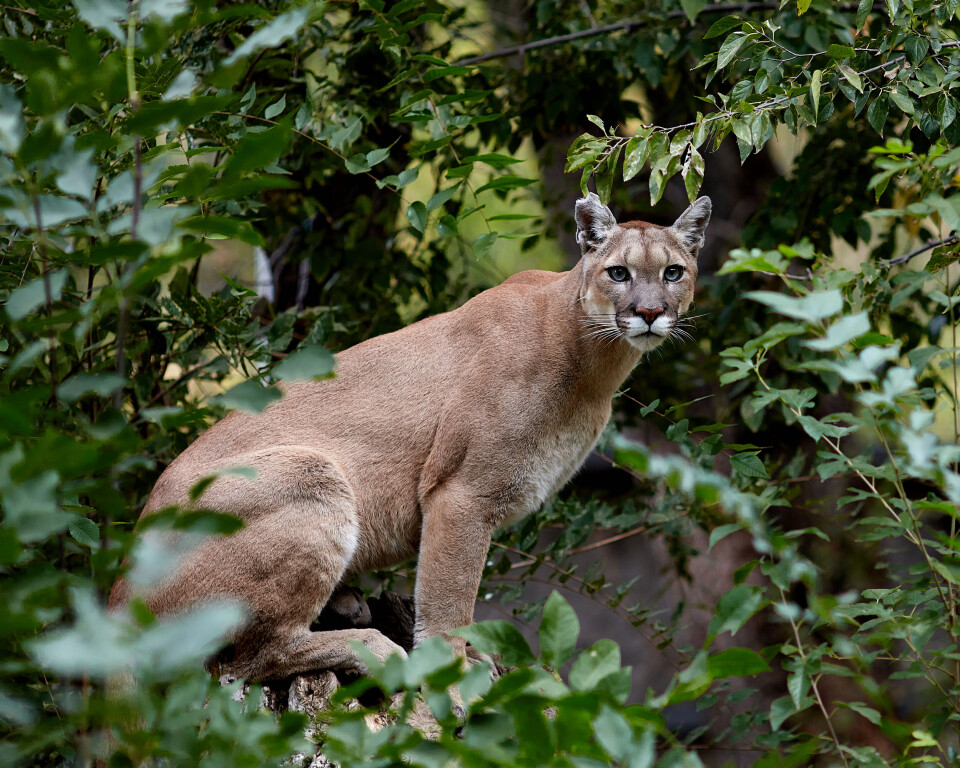-
High demand for relaunch of Ryanair’s new London - France route
Many UK residents own second homes in region
-
Visa delivery policy review ordered by French PM
'France welcomed more than half a million additional immigrants in 2024 - an unprecedented level', said François Bayrou
-
Which fruits, vegetables and fish are in season in France this April?
Strawberry season begins, compensating for end of winter vegetables
Search for Pas-de-Calais puma recalls hunt for other big cats in 2000
Several people spotted the ‘two round heads’ and ‘yellow almond-shaped eyes’ of a pair of mysterious large cats roaming near Amiens 21 years ago

The search for a puma on the loose in the countryside to the west of Arras (Pas-de-Calais) is now stretching into its third week, with the animal – thought to be an undeclared pet – proving to be elusive.
The young animal was spotted around Auxi-le-Château – where it was first seen on October 13 – on Wednesday evening (October 27) by a local resident and then by gendarmes, but the authorities were unable to catch it.
Yesterday it was reported that the body of a premature, stillborn calf had been found, possibly “devoured” by the puma but the authorities say the young animal could simply have been in a state of “advanced decomposition” and not touched by the big cat.
Read more: Petition condemns decision to shoot puma on loose in north France
Read more: Update: Pas-de-Calais puma can be caught, say French wildlife groups
It was not too far from Arras that another cat hunt took place 21 years ago in July 2000.
In the village of Saint-Sauveur near Amiens (Somme), a farm appeared to become the playground of two big cats, triggering a huge police operation and media storm.
The farm was owned by André Ladowski and his wife Nicole, who told Franceinfo that, “at the time we had horses. Our neighbour told us that she heard them neighing all through the night. They were scared of something.
“We [also] had a small hut in which we would occasionally sleep. In the morning, we woke up and all the bins had been overturned, the bones [in them] eaten.”
On July 20, 2000, in the middle of the day, Mr Ladowski made a strange discovery.
“I saw [the] animals, which were fighting or playing. I told my wife and she called the fire and rescue service,” he said.
The authorities found hairs in the undergrowth which suggested the presence of “two young leopards or tigers,” and advised local residents not to go walking around the area.
The next day, a group of teenagers spotted one of the cats once again, three kilometres away from the Ladowskis’ land, and informed the gendarmerie.
Gendarme Benoît Carbonnet saw the animals and watched them for several minutes. “I saw two round heads with yellowy, almond-shaped eyes. They were both very thin and about one metre long with a light grey coat.”
On July 22, the authorities began leaving pieces of meat around the area to entice the cats out of their hiding place. Around 150 gendarmes were mobilised to assist with the search, as well as thermal imaging cameras and a helicopter.
However, the animals were never seen again.
Amiens was soon full of journalists representing newspapers from around the country, who had arrived in the hope of finding out more about the cats.
“It was madness!” Ms Ladowski said.
Despite the efforts of the authorities, the whereabouts and origins of the cats remained a mystery: no nearby circuses or zoos were searching for an escaped animal, and no local residents reported a missing pet.
“This was not very reassuring: we were still a bit scared every time we went out on our land,” the Ladowskis said. “The hunters made fun of us, the whole world made fun of us! The hunters kept saying that they would kill them, but we would have liked to have seen them come up against those big cats!”
Over the following days, further cat sighting reports began trickling in.
On July 25, a lorry driver spotted a ‘tiger’ on the side of the A26 and on July 26, big cat footprints were supposedly found in Saint-Quentin. Both reports were later proved to be unfounded.
People began to doubt whether the animals had ever been seen at all, but the local mairie and the police continued to take the sightings seriously.
With the cats having seemingly vanished, Paris’ Natural History Museum set about examining the hairs and footprints left around the Ladowskis’ farm to shed some light on the type of animal that had been roaming around the area.
And it turned out that they were neither from lions nor tigers nor leopards.
On August 2, 2000, analysis confirmed that: “these hairs belonged to domestic cats, alley cats,” according to the museum’s mammalogy profession, Michel Tranier.
Ms Ladowski would not accept this explanation: “They were big cats, they were pumas! We saw them with our own eyes. We saw that they were pumas, with their big tail.” Her opinion was shared by Lieutenant-colonel Haddad of Somme’s gendarmerie.
The Natural History Museum of Paris did concede that, considering that the hairs were 6cm long, the cats must have weighed 20-25kg.
The average domestic cat weighs between 3.5 and 4.5kg.
“It is possible that there was something the size of a small puma wandering round Picardy,” said Mr Tranier. “[The footprints] could have belonged to a young puma. I use the conditional tense because I cannot [say for sure].”
To this day, no one can say for sure what was hiding in the Somme countryside during the summer of 2000.
Related stories
Why French government agreement marks historic day for animal welfare
Shepherd in south of France fined after his guard dogs bite hikers
























